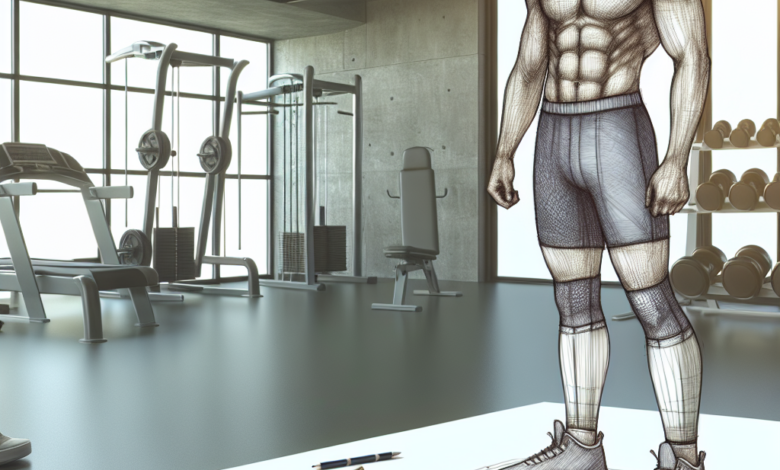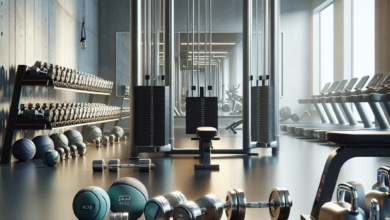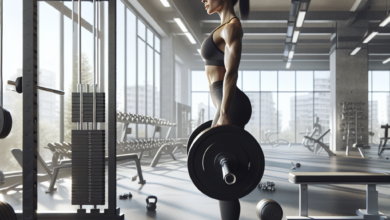Beginners’ Workout Plan Example: Get Fit Now!

Embarking on your fitness journey can be both exciting and overwhelming. As a beginner, it’s important to approach your new workout routine with a clear plan and realistic goals. Before you jump into any workout plan example for beginners, ensure that you have a basic understanding of workout principles, such as the importance of warm-ups, cool-downs, and proper form to prevent injuries. Starting with a solid foundation will help you progress safely and effectively.
To help you get started, Muscle Theory offers a tailored Beginner’s Workout Plan Example that is designed to introduce you to various exercises that target the major muscle groups. This plan will guide you through strength training, cardiovascular workouts, and flexibility routines. Remember, consistency is key; aim to work out at least three times a week, and don’t hesitate to adjust the intensity and duration to match your fitness level.
As you proceed, listen to your body and give it the rest it needs to recover. Nutrition also plays an integral part in your journey, so be mindful of what you fuel your body with. A balanced diet, rich in protein, vegetables, and whole grains, will support your workout goals.
Ready to take the first step? Explore More at Muscle Theory and find the comprehensive details of our Beginner’s Workout Plan Example. Let’s get started on a path to a healthier, stronger you!
Essential Equipment for Beginner Workouts
As you set out on your fitness journey, having the right equipment can make all the difference in your workouts. While a gym membership provides access to a wide range of gear, setting up a home workout space doesn’t require a huge investment. For beginners, there are a few key pieces of equipment that can help you execute your workout plan example for beginners effectively.
- An exercise mat is essential for floor exercises, stretching, and yoga, offering cushioning and support.
- Resistance bands are incredibly versatile and can be used for a full-body workout, enhancing strength and flexibility.
- Dumbbells or kettlebells come in various weights and are perfect for adding resistance to your strength training.
- A jump rope is a simple, yet effective tool for cardiovascular exercise that improves coordination and stamina.
- Lastly, a stability ball can be utilized for core exercises, balance training, and even as a desk chair to improve posture.
Remember, the most essential equipment is your own body. Many effective workouts can be performed with bodyweight exercises such as push-ups, squats, and lunges. As you progress, you can gradually incorporate more equipment to diversify your workouts and challenge your muscles in new ways. However, the foundation of your routine should be built on mastering the basics and developing a strong technique.
Understanding Workout Structure and Terminology

For those just starting their fitness journey, the world of exercise can be overwhelming with its own language and structure. Grasping the basics is crucial for following a workout plan example for beginners and for ensuring you execute exercises safely and effectively. Let’s break down some of the key components.
A “set” refers to a group of consecutive repetitions (reps) of an exercise without stopping. For example, doing ten push-ups in a row constitutes one set. A “rep”, or repetition, is one complete motion of an exercise. A beginner’s workout might consist of multiple sets of a given number of reps for each exercise.
Workout structure typically involves a warm-up phase, the main workout, and a cool-down. The warm-up is designed to prepare your body for the demands of the workout by increasing blood flow to your muscles and reducing the risk of injury. The main workout may focus on strength training, cardio, or a mix of both. Finally, the cool-down helps your body to gradually return to its resting state, often incorporating stretching to improve flexibility and reduce muscle soreness.
Understanding terms like circuit training, which involves rotating through a series of exercises with minimal rest, or super sets, which pair two exercises back-to-back without rest, can also help beginners navigate their routines. Additionally, knowing the difference between compound exercises, which work multiple muscle groups at once, and isolation exercises, which target a single muscle group, allows for a more focused and efficient workout plan.
Full-Body Workout Plan Example for New Gym-goers

Embarking on a fitness journey can be exciting, and a full-body workout plan example for beginners is an excellent starting point for new gym-goers. This type of plan ensures that you work all the major muscle groups in a single session, promoting balanced strength and muscular development.
Here’s a simple full-body workout plan that beginners can use 2-3 times a week, with at least one rest day in between sessions:
- Warm-Up: 5-10 minutes of light cardio (treadmill walking, stationary cycling)
- Squats: 3 sets of 10-12 reps
- Push-Ups (or Knee Push-Ups for beginners): 3 sets of 8-10 reps
- Dumbbell Rows: 3 sets of 10-12 reps per arm
- Standing Shoulder Press: 3 sets of 10-12 reps
- Plank: 3 sets of 30 seconds to 1 minute
- Cooldown: Stretching routine targeting all major muscle groups
It’s important for beginners to focus on form and technique rather than the amount of weight lifted. Starting with bodyweight exercises or light weights can help build a strong foundation. As you progress, you can gradually increase the weight and complexity of exercises to continue challenging your muscles.
This full-body workout plan example offers a balanced approach for those new to the gym, allowing for ample recovery time while still engaging each muscle group. It’s a sustainable way to build fitness and confidence in your abilities, setting the stage for more advanced routines in the future.
Nutritional Tips to Complement Your Workout Routine

Complementing your workout routine with the right nutrition is crucial for achieving optimal fitness results. Nutrition fuels your body for exercise and helps with recovery and muscle growth post-workout. Here are some key nutritional tips for beginners to enhance their workout results:
- Stay Hydrated: Ensure you’re drinking plenty of water throughout the day, not just during your workouts. Dehydration can impair your performance and recovery.
- Balance Your Macros: Your diet should include a balanced mix of carbohydrates, proteins, and fats. Carbs provide energy, proteins are essential for muscle repair, and fats support overall health.
- Timing Your Meals: Eating a meal or snack 1-2 hours before working out can provide you with energy. Post-workout, consume protein and carbs to aid muscle recovery and replenish energy stores.
- Whole Foods Over Supplements: Whenever possible, choose whole foods over supplements for your nutrient intake. They provide a broader range of nutrients and are better absorbed by the body.
- Monitor Your Intake: Keep track of what you eat to ensure you’re getting enough nutrients to support your workout regimen and goals. Adjust as necessary based on your progress and how you feel.
Remember, individual nutritional needs can vary greatly, so it’s beneficial to consult with a nutritionist or dietician, especially if you have specific fitness goals or dietary restrictions. By aligning your diet with your exercise plan, you’ll be better equipped to reach your fitness milestones.
Recovery and Rest: Essential Components of Fitness Progress

Many beginners underestimate the importance of recovery and rest in their fitness journey. However, these are as critical as the workouts themselves. Adequate rest allows your muscles to repair and grow stronger, while improper recovery can lead to injuries and stalls in progress. Here are some strategies to ensure you’re giving your body the rest it needs:
- Get Enough Sleep: Aim for 7-9 hours of quality sleep per night to facilitate muscle recovery and hormonal balance.
- Active Recovery: Engage in low-intensity activities like walking or yoga on your rest days to promote circulation and muscle healing without overexertion.
- Hydrate and Nourish: Continue to hydrate and eat balanced meals on rest days to support the body’s natural repair processes.
- Listen to Your Body: If you’re feeling particularly sore or fatigued, it may be a sign that you need extra rest. Pay attention to these cues and adjust your workout plan accordingly.
Integrating these recovery principles into your routine will help you avoid burnout and injuries, ensuring steady progress towards your fitness goals. Remember, rest days are not a setback but a vital part of your overall training plan.
For a deeper understanding of how to balance workout intensity with adequate recovery, Explore More at Muscle Theory. Our resources can guide you in creating a balanced workout plan example for beginners that promotes sustainable fitness growth.



